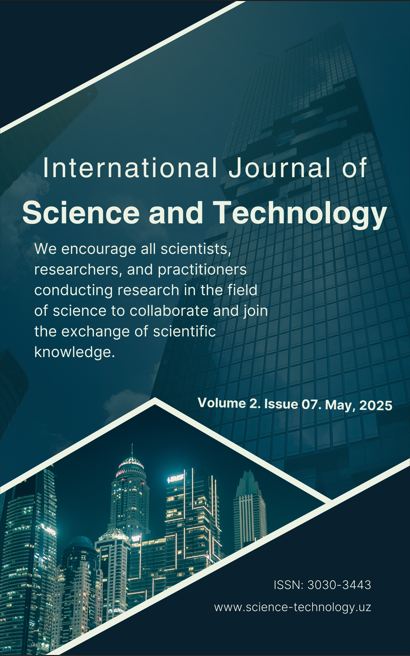INTENSIFICATION AND DEINTENSIFICATION EXPRESSED THROUGH MORPHOLOGICAL MEANS IN ENGLISH
Nashr qilingan 2025-05-16
Kalit so‘zlar
- intensification, deintensification, affixation, prefixation, suffixation, compounding, reduplication, intensity

This work is licensed under a Creative Commons Attribution-NonCommercial-NoDerivatives 4.0 International License.
How to Cite
Abstrak
This study examines the morphological mechanisms of intensification and deintensification in English. Through corpus analysis, we identified and categorized affixation, compounding, and reduplication as primary morphological strategies for expressing intensity. Results reveal that prefixation (ultra-, super-) is the most productive intensification strategy, while suffixation (-ish, -y) dominates deintensification processes. These findings contribute to our understanding of how English morphology systematically encodes scalar meaning, with implications for language teaching and natural language processing applications.
References
- Baayen, R. H. (1992). Quantitative aspects of morphological productivity. In G. Booij & J. van Marle (Eds.), Yearbook of Morphology 1991 (pp. 109-149). Kluwer Academic Publishers.
- Bauer, L., Lieber, R., & Plag, I. (2013). The Oxford reference guide to English morphology. Oxford University Press.
- Bauer, L., Beliaeva, N., & Tarasova, E. (2015). Compounds and multi-word expressions in English. In P. O. Müller, I. Ohnheiser, S. Olsen, & F. Rainer (Eds.), Word-formation: An international handbook of the languages of Europe (pp. 1783-1802). De Gruyter Mouton.
- Beltrama, A. (2018). Precision and speaker qualities: The social meaning of pragmatic detail. Linguistics Vanguard, 4(1), 20170042.
- Bolinger, D. (1972). Degree words. Mouton.
- Davies, M. (2008-). The Corpus of Contemporary American English (COCA): 1 billion words, 1990-2019. Available at https://www.english-corpora.org/coca/
- Dressler, W. U., & Barbaresi, L. M. (1994). Morphopragmatics: Diminutives and intensifiers in Italian, German, and other languages. Mouton de Gruyter.
- Ito, R., & Tagliamonte, S. (2003). Well weird, right dodgy, very strange, really cool: Layering and recycling in English intensifiers. Language in Society, 32(2), 257-279.
- Körtvélyessy, L. (2015). Evaluative morphology from a cross-linguistic perspective. Cambridge Scholars Publishing.
- Lakoff, G., & Johnson, M. (1980). Metaphors we live by. University of Chicago Press.
- Lieber, R. (2004). Morphology and lexical semantics. Cambridge University Press.
- Paradis, C. (2008). Configurations, construals and change: Expressions of DEGREE. English Language and Linguistics, 12(2), 317-343.
- Quirk, R., Greenbaum, S., Leech, G., & Svartvik, J. (1985). A comprehensive grammar of the English language. Longman.
- Schneider, K. P. (2003). Diminutives in English. Max Niemeyer Verlag.
- Schneider, K. P. (2013). The truth about diminutives, and how we can find it: Some theoretical and methodological considerations. SKASE Journal of Theoretical Linguistics, 10(1), 137-151.
- The British National Corpus, version 3 (BNC XML Edition). (2007). Distributed by Bodleian Libraries, University of Oxford, on behalf of the BNC Consortium. Available at http://www.natcorp.ox.ac.uk/
- Zwicky, A. M., & Pullum, G. K. (1987). Plain morphology and expressive morphology. In J. Aske, N. Beery, L. Michaelis, & H. Filip (Eds.), Proceedings of the Thirteenth Annual Meeting of the Berkeley Linguistics Society (pp. 330-340). Berkeley Linguistics Society.

